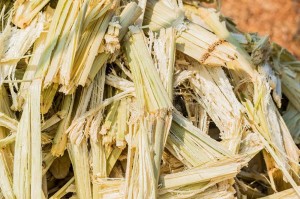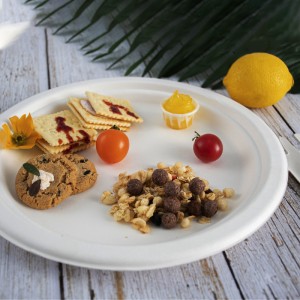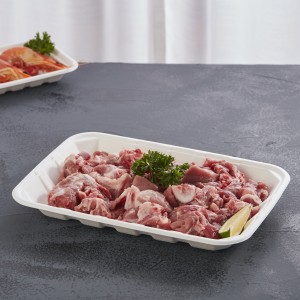Bagasse is made out of the remains of the sugarcane stalk after the juice has been removed. Sugarcane or Saccharum officinarum is a grass that grows in tropical and subtropical countries, especially Brazil, India, Pakistan China and Thailand. Sugarcane stalks are cut and crushed to extract the juice that is then separated into sugar and molasses. The stalks are typically burned, but can also be turned into bagasse which is very good for bioconversion using microbes making it a very good renewable energy source. It is also used to make compostable products.
What are Sugarcane Bagasse Products?
Sometimes circumstances dictate the use of disposable products. At Green Line Paper, we understand that there are other, more sustainable and environmentally friendly raw products than wood fibers from trees or petroleum-based polystyrene foam products. The bagasse process utilizes what would commonly be a waste product from sugar production (residual sugar cane juice from the fibrous stalks) to make a wide variety of sustainable products. By utilizing the waste from the fibrous stalks from sugarcane, bagasse can be used to create products ranging from tableware and food serving items to food containers, paper products and more. At Greenline Paper we offer the best selling bagasse products and all our sugarcane bagasse products are eco-friendly and biodegradable.
How do you Make Bagasse Products?
First the bagasse is turned into a wet pulp which is then dried into a pulp board and mixed with agents that resist water and oil. It is then molded into the shape desired. The finished product is tested and packaged. Plates, bowls and notebooks made from bagasse will compost completely in 90 days.
What is Bagasse Paper?
Bagasse paper products are a further extension of the recycled/recyclable, sustainable mantra that GreenLine Paper Company espouses with all of their product lines. That's because office paper products can be made using the Bagasse process in conjunction with recycled paper fibers as well.
Why Should You Use Bagasse Products?
The manufacturing process for Bagasse paper and other bagasse products is environmentally friendly as well since it does not use as much energy or chemicals as the manufacturing process for wood fibres or foam. That's why highly sustainable, renewable, and compostable are equally applicable adjectives to high quality, durable, and attractive when it comes to Bagasse products. When it comes to sustainability and protecting the environment through the products that you use at home, in the office and everywhere in between, you can count on GreenLine Paper Company because we count on an extensive line of quality and environmentally friendly Bagasse products.
Does bagasse decompose? On the Other Hand, Are Bagasse Products Compostable?
Bagasse does decompose and if you have a home compost, it is a welcome addition. However, if you are hoping to put your bagasse trash out with the recycles, you may have to wait a while. The US does not have many commercial compost facilities.






